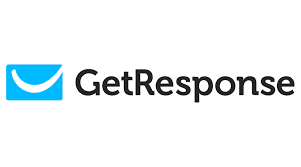In the digital marketing arena, your landing page is more than just a stopover for visitors; it’s the heartbeat of your campaign, the make-or-break point where interest either fizzles out or transforms into action. With the stakes this high, choosing the right landing page tool isn’t just important—it’s essential. Today, we’re zeroing in on two contenders: Unbounce, renowned for its laser-focused landing page capabilities, and GetResponse, a versatile platform known for email marketing that’s branched out into landing pages. Each has its strengths, but which one aligns with your needs? Dive in as we dissect the key features, unraveling the best landing page tool for you.
| Unbounce | GetResponse |
|---|---|
 |  |
| G2 Score – 4.4 out of 5 stars | G2 Score – 4.2 out of 5 stars |
| TrustRadius Score – 7.1/10 | TrustRadius Score – 8.2/10 |
Usability and Design Flexibility
Crafting Your Online Masterpiece
At the core of a successful landing page lies its ability to engage and convert. This magic begins with usability and design flexibility—factors that dictate how easily you can bring your vision to life and how effectively it resonates with your target audience. Here’s how Unbounce and GetResponse stack up in empowering you to create that perfect landing page.
Unbounce: A Designer’s Dream
Unbounce is synonymous with customization and creativity. Its intuitive drag-and-drop builder empowers you to craft bespoke landing pages that don’t just fit your brand—they elevate it. With a rich selection of templates as your canvas, Unbounce offers unparalleled design flexibility, allowing for deep customization that can match your brand’s unique aesthetic. Whether tweaking a template or building from scratch, you have the freedom to create a page that’s as unique as your campaign.
Dynamic Text Replacement (DTR) takes personalization a step further, tailoring your content to match the visitor’s intent, while advanced A/B testing tools let you refine your pages based on real-world data. For those who crave control over every pixel, Unbounce’s detailed customization capabilities ensure your landing page is not just seen but remembered.
GetResponse: More Than Just Email
While traditionally celebrated for its email marketing prowess, GetResponse has expanded its suite to include landing pages, bringing its user-friendly ethos to the fore. The platform offers a straightforward drag-and-drop editor, coupled with a variety of templates that cater to different industries and campaign goals. While it may not boast the same level of detailed customization as Unbounce, GetResponse shines in its simplicity and speed, enabling you to get landing pages up and running in no time.
GetResponse integrates landing pages with its broader marketing platform, allowing for seamless connections with email campaigns, webinars, and automation workflows. This integration is a boon for marketers looking for a cohesive toolset, with landing pages being one cog in a well-oiled machine.
Conversion Optimization Features
The Key to Capturing Leads
After establishing the foundation of usability and design flexibility, the next crucial area of comparison between Unbounce and GetResponse is their conversion optimization features. Conversion optimization is the linchpin of any successful landing page, turning casual browsers into committed leads or customers. Let’s delve into how each platform equips you with the tools to maximize your conversion rates.
Unbounce: Tailored Experiences for Targeted Conversions
Unbounce has positioned itself as a leader in the landing page space, largely due to its advanced optimization capabilities. The platform provides users with an array of tools focused on increasing conversion rates, starting with its A/B testing functionality. This feature allows marketers to test variations of their landing pages to determine which elements resonate most with their audience. By continuously refining and optimizing these elements based on real user data, Unbounce users can significantly improve the effectiveness of their landing pages.
Dynamic Text Replacement is another feature that sets Unbounce apart. It enhances the relevance of landing pages by tailoring content to match the search terms or user attributes, providing a personalized experience that can dramatically increase conversion rates. This level of personalization ensures that visitors are more engaged with the content, making them more likely to take the desired action.
Furthermore, Unbounce offers popups and sticky bars, versatile tools that can be used to capture attention and guide visitors toward conversion without disrupting their browsing experience. These features are easily customizable and can be triggered based on specific user behaviors, making them highly effective for lead capture and conversion.
GetResponse: Streamlined Conversion Tools for Efficient Marketing
GetResponse, while traditionally known for its email marketing capabilities, has expanded its suite to include powerful landing page tools that integrate seamlessly with its broader marketing platform. This integration is where GetResponse’s strength lies in conversion optimization. By leveraging data from email campaigns, webinars, and automation workflows, GetResponse users can create highly targeted landing pages that are optimized for conversion from the outset.
The platform’s A/B testing feature, while not as granular as Unbounce’s, still provides valuable insights into which landing page designs and content are most effective at converting visitors. This testing is enhanced by GetResponse’s ability to integrate landing page performance data with insights from other marketing channels, offering a comprehensive view of how each element of a campaign contributes to conversion goals.
Additionally, GetResponse’s Autofunnel feature simplifies the process of creating complete marketing funnels, including landing pages, email sequences, and payment processing. This streamlined approach allows users to build and optimize entire conversion paths, not just individual landing pages, making it easier for businesses to guide prospects through the buying journey.

Related: Check out our free SEO suite

Integration Capabilities
Enhancing Your Marketing Stack
In today’s interconnected digital marketing landscape, the strength of a landing page tool is significantly amplified by its ability to integrate with other marketing tools and services. This ensures a smooth workflow and enables marketers to create more cohesive and effective campaigns.
Unbounce: Seamless Connectivity with Your Marketing Tools
Unbounce stands out for its robust integration capabilities, designed to streamline your marketing efforts and enhance the performance of your landing pages. With direct integrations across a wide array of categories, including email marketing platforms, CRM systems, analytics tools, and more, Unbounce ensures that your landing pages can easily connect with the tools you use daily. This extensive integration network allows for a more efficient lead capture and management process, enabling you to leverage the full power of your marketing stack.
Furthermore, Unbounce’s integration with Zapier dramatically expands its connectivity, granting access to thousands of other apps and tools. This means you can automate workflows, sync data across platforms, and connect your landing pages to nearly any tool or service you might need, even if a direct integration isn’t available. Whether you’re looking to send leads directly to your CRM, trigger personalized email sequences, or track conversions with sophisticated analytics, Unbounce’s integrations facilitate a seamless flow of data across your marketing tools.
GetResponse: Integrated Marketing Solutions for Streamlined Campaigns
GetResponse, known for its all-in-one marketing platform, extends its integration capabilities to its landing page tool, ensuring users can benefit from a cohesive marketing experience. The platform offers a variety of integrations with popular CRM systems, email marketing services, e-commerce solutions, and social media platforms. These integrations are designed to complement the platform’s suite of tools, providing a streamlined approach to managing and optimizing your marketing campaigns.
The synergy between GetResponse’s landing pages and its other marketing tools, such as email marketing and automation workflows, highlights the platform’s integrated approach. By allowing data to flow seamlessly between tools, GetResponse enables marketers to create more targeted and effective campaigns. Additionally, integration with external tools through APIs and Zapier further enhances GetResponse’s ability to fit into diverse marketing stacks, making it a versatile option for businesses looking to centralize their marketing efforts.
Analytics and Reporting
Gleaning Insights for Strategic Decisions
The ability to track, analyze, and understand the performance of your landing pages is vital for refining your strategies and achieving better outcomes. Both Unbounce and GetResponse provide users with analytics and reporting features, but they cater to different needs and preferences in terms of data analysis and reporting capabilities.
Unbounce: In-Depth Analysis for Data-Driven Marketers
Unbounce’s analytics and reporting are designed to offer deep insights into the performance of your landing pages. The platform provides detailed metrics on visitor behavior, conversion rates, and the overall effectiveness of your pages and A/B tests. This level of granularity allows marketers to dive deep into the data, identifying what works and what doesn’t with precision.
One of Unbounce’s strengths lies in its ability to integrate with advanced analytics tools like Google Analytics and other marketing platforms, enabling a more comprehensive analysis of landing page performance within the context of broader marketing campaigns. This seamless integration ensures that data is not siloed but is part of a unified analysis, providing a holistic view of your marketing efforts.
Furthermore, Unbounce’s reporting capabilities make it easy to share insights with team members and stakeholders, ensuring that everyone involved in the marketing process has access to the data they need to make informed decisions. The platform’s focus on detailed analytics and easy integration with other tools makes it an excellent choice for marketers who rely on data to drive their optimization strategies.
GetResponse: Integrated Reporting for Holistic Campaign Analysis
GetResponse, with its all-in-one marketing platform approach, offers analytics and reporting features that are integrated with its email marketing, automation, and CRM tools. This integration provides a comprehensive view of how landing pages contribute to the overall performance of marketing campaigns, from lead capture through to conversion and beyond.
The platform’s analytics focus on key performance indicators (KPIs) such as conversion rates, click-through rates, and email campaign performance, providing a clear picture of how different components of a campaign work together. GetResponse’s reporting tools are designed to be user-friendly, making it easy for marketers to access and understand their data without needing deep technical expertise.
Additionally, GetResponse offers visual analytics tools, such as conversion funnels, which allow users to see at a glance how effectively their landing pages and associated campaigns are driving conversions. This visual approach to reporting is particularly useful for quickly identifying bottlenecks in the conversion process and making strategic adjustments.
Pricing and Plans
Balancing Budget with Needs
| Unbounce | Unbounce offers several pricing plans for its landing page services. The “Build” plan starts at $74 per month when billed annually, or $99 on a monthly basis. The “Experiment” plan is $112 per month with annual billing, or $149 monthly. The “Optimize” plan costs $187 monthly with an annual commitment, or $249 if paid monthly. For custom needs, the “Concierge” plan is available at $649 per month, offering tailored services for higher limits and enterprise features |
| GetResponse | GetResponse provides a tiered pricing structure that starts with the Basic plan at around $15 per month for up to 1,000 subscribers, offering unlimited landing pages, email marketing, and autoresponders. The Plus plan begins at $49 per month, and it adds automation builders, webinars, and contact scoring and tagging among other features. Pricing scales up with the number of subscribers and additional capabilities. |
Unbounce: Tailored Tiers for Specific Demands
Unbounce’s pricing strategy is tiered, providing a clear pathway for businesses to scale their use of the platform as their needs evolve. Starting with a basic plan that includes all the essential features for creating and optimizing landing pages, Unbounce offers upgrades that expand capabilities such as the number of landing pages, visitors, and domains, as well as access to more advanced features like A/B testing, AMP pages, and client sub-accounts for agencies.
A notable aspect of Unbounce’s pricing model is its commitment to offering value at each level. Even at the entry tier, users gain access to a powerful set of tools designed to enhance landing page performance. For businesses with more sophisticated needs or those looking to scale, higher-tier plans unlock additional features that support more complex marketing strategies.
GetResponse: Comprehensive Marketing at Competitive Prices
GetResponse offers a unique value proposition by integrating landing page tools within its broader marketing platform. The pricing for GetResponse is not just for landing pages but for an all-in-one solution that includes email marketing, automation workflows, webinars, and CRM functionalities. This integrated approach provides substantial value, especially for businesses looking for a comprehensive marketing solution.
The platform’s pricing tiers are structured to cater to different user needs, starting with a basic plan ideal for beginners and scaling up to more advanced plans that offer increased limits and access to premium features like advanced segmentation and automation builders. GetResponse also offers a unique “Max” plan, which provides custom solutions tailored to the specific needs of large businesses or those with complex marketing strategies.
Conclusion
Unbounce shines with its unparalleled customization capabilities, advanced conversion optimization tools, and robust integration options. It stands out as a premier choice for marketers focused on creating highly tailored and optimized landing pages. Coupled with its responsive customer support and an active community, Unbounce empowers users to not only build effective landing pages but also to continuously enhance their digital marketing skills.
GetResponse, on the other hand, offers a broader marketing solution that extends beyond landing pages. Its strength lies in the seamless integration of landing pages with email marketing, automation, and a suite of other tools designed to nurture leads through the entire marketing funnel. With competitive pricing, 24/7 support, and a commitment to user education, GetResponse is ideally suited for businesses looking for an integrated approach to their digital marketing campaigns.
Read Next:





















